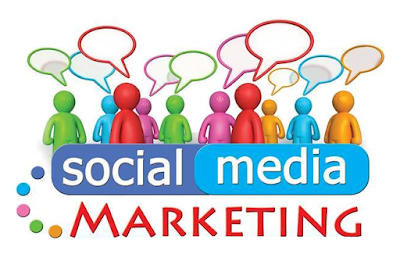How your company's logo influences purchases decisions
Your company’s logo is
the visual figurehead of your brand, so it’s important to get it
right. Whether intentional or not, every detail of your logo will
influence people who see it. That's why nothing should be arbitrary.
In fact, it’s in your
best interest to make sure that every logo design choice is
intentional and communicates the message you want to convey because thoughtless
design choices lead to misleading or confusing logos.
What follows is a deeper
look at the psychology of logo design, in terms of fonts, shapes, lines,
colors and composition -- and how these elements affect your logo's
influence on customers' purchasing decisions.
The psychology of
fonts
Fonts have a psychological impact on
people. The emotion they generate is directly tied to the shape of the letters
and our psychological response to those shapes. Most important in anyone's font decision is certainty
that the company name is legible and readable.
The psychology of shapes
in logo design
All logos --
whether they include an icon and text, an icon only, or even just text --
have a shape. The three major categories -- geometric, abstract and organic --
all come prepackaged with their own psychological associations.
Geometric shapes
Geometric shapes look
man-made. Mathematically precise squares, perfect circles and Isosceles
triangles don’t tend to appear in nature. So, using these shapes communicates a
sense of order and power. The various types:
Squares and
rectangles convey stability,
reliability, strength, order and predictability. Think of the bricks used
to build sturdy, stable buildings. If you want your logo to communicate
strength and reliability, consider incorporating squares or rectangles.
Circles are
never-ending. So, they may be the
right choice if you want to make consumers think of harmony, unity,
eternity or timelessness. Circles communicate softness, gentility and
femininity.
Triangles are a directional shape. As a result, they change
meaning depending on how they are positioned. When right side up, triangles
convey power, stability and upward momentum. Inverted triangles suggest
instability or downward momentum. And, triangles pointing to the side convey
movement and direction based on where the triangle’s point is facing.
The psychology of lines
Lines divide space.
They create definition and form. They communicate direction. Lines tell us
where to stand and where to drive. But, beyond their practical function,
they can also communicate a great deal aesthetically.
Thin
lines, in
particular, are delicate and may appear fragile. They communicate elegance
and femininity. They can also imply frailty, weakness or
flexibility. Alternately, thick lines suggest strength and rigidity. They
appear more traditionally masculine than thin lines. Thick, bold lines are used
to draw focus and create emphasis where they appear.
Straight lines imply order, structure and predictability. They may
also be perceived as rigid or harsh. Curved lines, on the other hand,
offer more energy and dynamism.
Positioning: The position of your line in space impacts the
psychological effect that the line creates.
Horizontal lines run parallel to the horizon. As a result, they
contain the least visual energy of all line positions. They feel comfortable
and safe.
Vertical lines run perpendicular to the horizon. They appear to rise
straight up from the earth, filling them with the potential visual energy to
tip or fall. Vertical lines draw the eye upward. And, as such, they are often
used in religious iconography to draw focus upward to the heavens.
Diagonal lines suggest movement and action. Diagonal lines can be
positioned anywhere between horizontal and vertical. This makes them very
expressive and the least stable of all the line positions.
Smooth lines are clean, calming and restful. Depending on their
context, they can convey confidence, fluidity or ease.
Jagged and
zig-zagging lines are filled with
tension. These dynamic lines change direction quickly, communicate erratic
movement, and irregularity. They can suggest excitement or anxiety, confusion
or danger.
The psychology of
colors
Color contributes the strongest emotional trigger in your logo design repertoire because colors are
strongly linked to emotions in the human psyche. Whether our interpretation of
colors is hardwired into our brains or is due to cultural influence -- or a
combination of the two -- there is a generally accepted language of color.
It’s also important to
bear in mind that how you mix your colors in a single design also has
psychological implications for your viewers.
Choose your colors
wisely to elicit appropriate brand-appropriate emotions. Your color choices
should always embody the personality of the brand.
The psychology of
composition
Fonts, shapes, lines,
and colors are the building blocks for a great logo design. But don’t
forget that how you compose those elements also impacts how the logo is
perceived and the message it sends. Here are some important considerations
to think through when you choose a logo design:
Size denotes
importance. The larger an object is
the more focus it draws and the more important it seems.
Scattered or irregular placement suggests playfulness, chaos or rebellion, while
orderly, symmetrical arrangements communicate formality, stability, and
conformity.
Layering items together create visual relationships, so be mindful of how you combine
shapes and lines.
Overall,
every detail of your company’s logo will influence people who see that
logo
.Addpro understands your
brand and makes informed, thoughtful choices regarding fonts, colors, shapes,
lines, composition and designs logo that communicate a lot about your brand.
For more information www.addpronetwork.com



Comments
Post a Comment